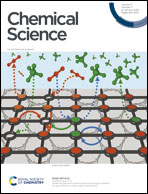Efficient polymerase chain reaction assisted by metal–organic frameworks†
Abstract
As a powerful tool for obtaining sufficient DNA from rare DNA resources, polymerase chain reaction (PCR) has been widely used in various fields, and the optimization of PCR is still in progress due to the dissatisfactory specificity, sensitivity and efficiency. Although many nanomaterials have been proven to be capable of optimizing PCR, their underlying mechanisms are still unclear. So far, the scientifically compelling and functionally evolving metal–organic framework (MOF) materials with high specific surface area, tunable pore sizes, alterable surface charges and favourable thermal conductivity have not been used for PCR optimization. In this study, UiO-66 and ZIF-8 were used to optimize error-prone two round PCR. The results demonstrated that UiO-66 and ZIF-8 not only enhanced the sensitivity and efficiency of the first round PCR, but also increased the specificity and efficiency of the second round PCR. Moreover, they could widen the annealing temperature range of the second round PCR. The interaction of DNA and Taq polymerase with MOFs may be the main reason. This work provided a candidate enhancer for PCR, deepened our understanding on the enhancement mechanisms of nano-PCR, and explored a new application field for MOFs.



 Please wait while we load your content...
Please wait while we load your content...